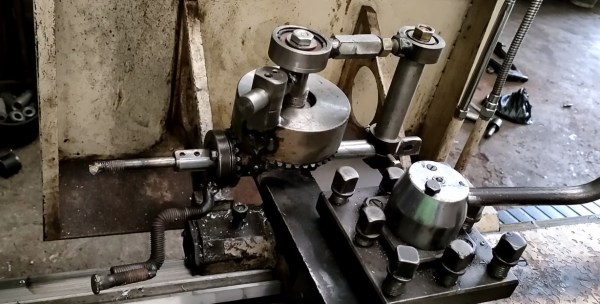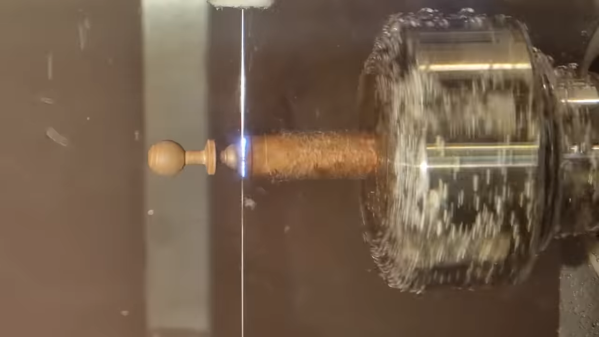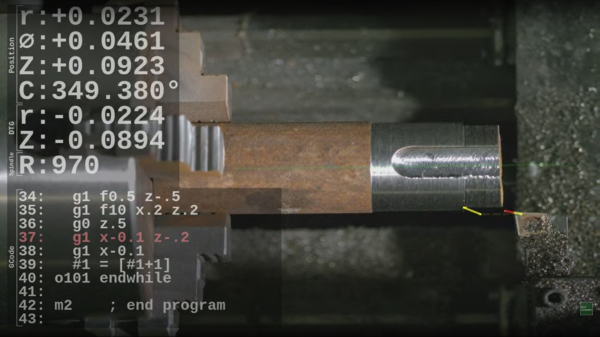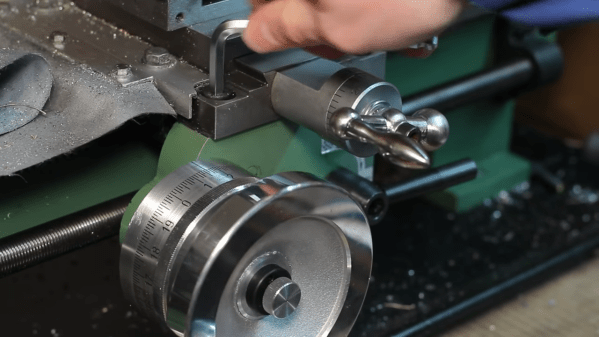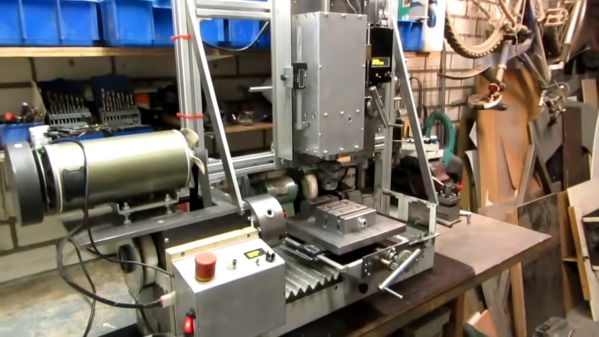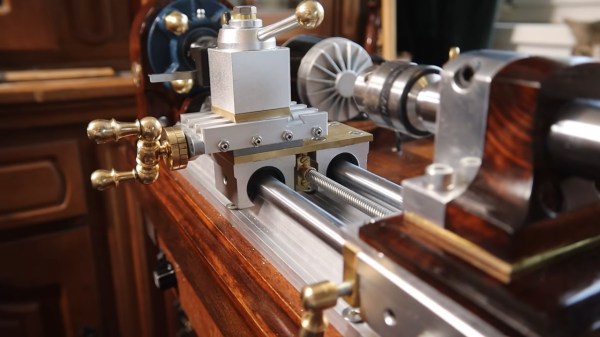Oil grooves are used to lubricate the inside of a bearing, and can come in many forms — from a single hole that takes a few drops of oil, to helical patterns that distribute it over the entire internal surface. The ideal arrangement is a looping figure eight pattern similar to an oscilloscope Lissajous figure, but cutting these is a nightmare. That is, unless you’ve got the proper tool.
We figure [Machine Mechanic] must need to cut a lot of them, as they spent quite a bit of time perfecting this custom lathe attachment to automate the process. Through an assortment of clever linkages and a rod-turned-crank that was welded together in-situ, the device converts the rotational motion of the lathe into a reciprocating action that moves the cutting tool in and out of the bearing. Incidentally the business end of this gadget started life out as a bolt, before it was turned down and had a piece of tool steel brazed onto the end.
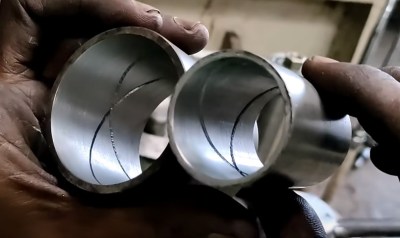 With a little adjustment, it seems like this device could also be used to carve decorative patterns on the outside of the workpiece. But even if this is the only trick it can pull off, we’re still impressed. This is a clever hack for a very specialized machine shop operation that most would assume you’d need a four-axis CNC to pull off.
With a little adjustment, it seems like this device could also be used to carve decorative patterns on the outside of the workpiece. But even if this is the only trick it can pull off, we’re still impressed. This is a clever hack for a very specialized machine shop operation that most would assume you’d need a four-axis CNC to pull off.
Lathes seem at first like rather single purpose machines, we’re always pleased to discover strange and wonderful things being done with them, like this seemingly impossible-to-turn piece, and this combo wire EDM and lathe.
Continue reading “Custom Lathe Tool Cuts Complex Oil Grooves”

